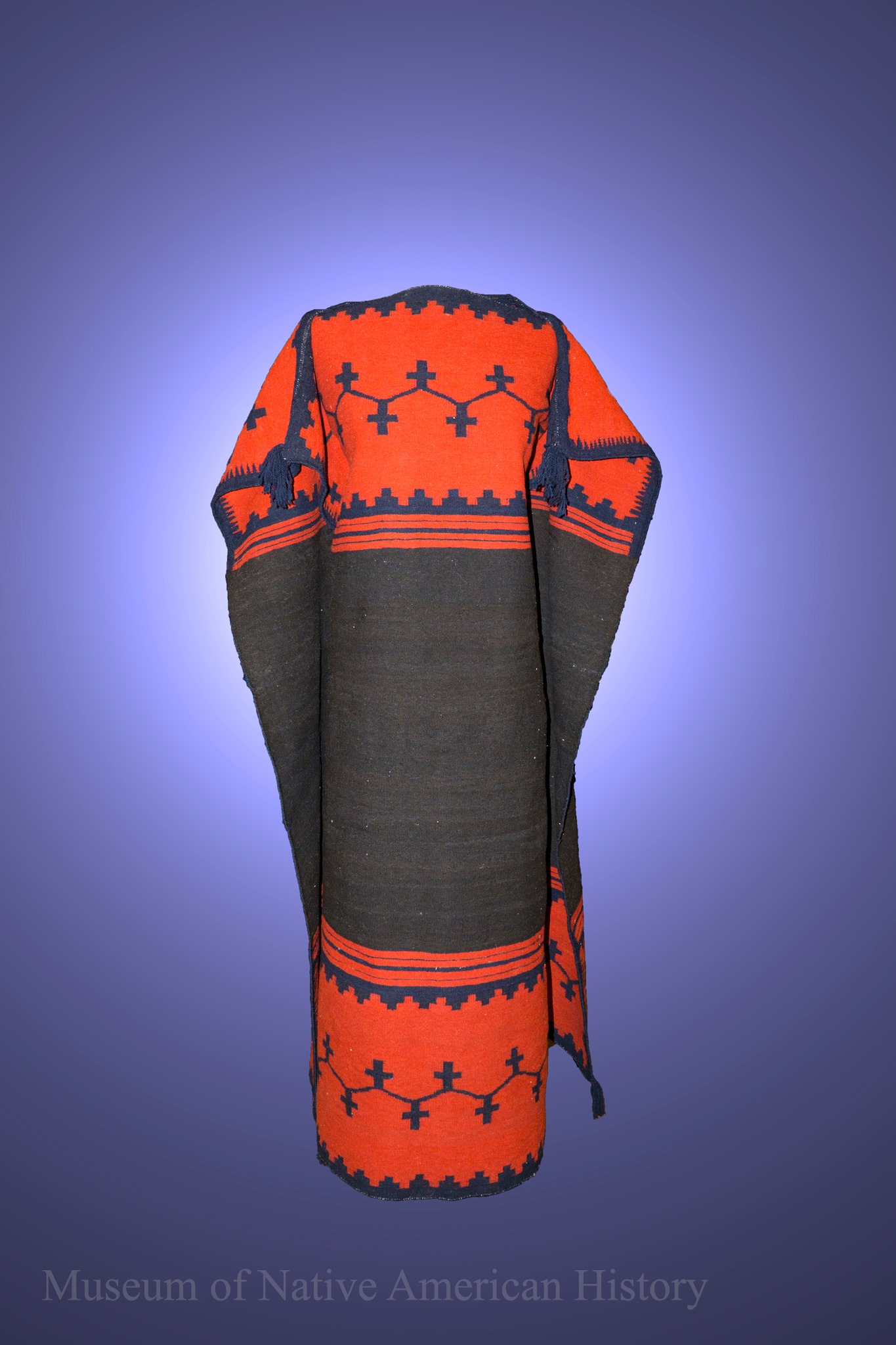Museum Monday is a weekly series where the museum of the month will highlight a different artifact from their collection.

This beautiful Navajo (Diné) Biil (pronounced “beel”) dress dates to the 1870s and would have been standard clothing for women before the Long Walk. The dress is sometimes referred to as a “rug dress.” It is made from two identical panels sewn together with openings at the neck and arms. They are traditionally made from wool; Navajo (Diné) weavers were master spinstresses and had access to the superior quality of wool from Navajo-Churro sheep. This yarn would turn into blankets and clothes, simple in design and weave.
This particular Biil has two panels (32.5″ x 51″ each) made from hand-spun wool. The weaver used indigo and cochineal dyes which creates the vibrant colors still visible today. Cochineal red comes from a cactus-eating insect home to Mexico and the Southwest United States. The cochineal bug was a key ingredient in creating the vibrant red color used in pigments and dyes up until the introduction of synthetic ingredients in the late 19th century.
Indigo is sourced from a plant native to East Asia, Egypt, India and Peru. Like cochineal red, indigo was an important trade product from the Americas upon its discovery. It was also replaced by synthetic dying in the late 19th century.
ABOUT THE MUSEUM

The Museum of Native American History reopened to the public April 2 after being closed for more than a year. MONAH is now open from 10 a.m. to 4 p.m. Wednesday through Saturday. Visitors must reserve free, timed tickets in advance and follow COVID-19 safety protocols. MONAH is located at 202 SW O Street in Bentonville, Arkansas.

